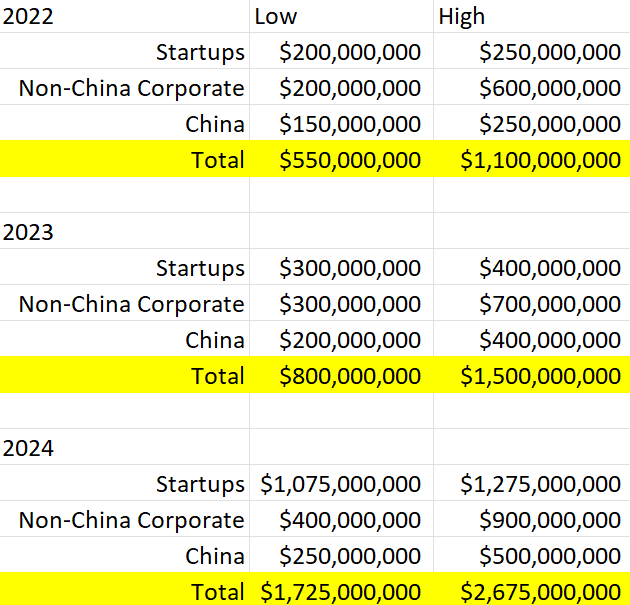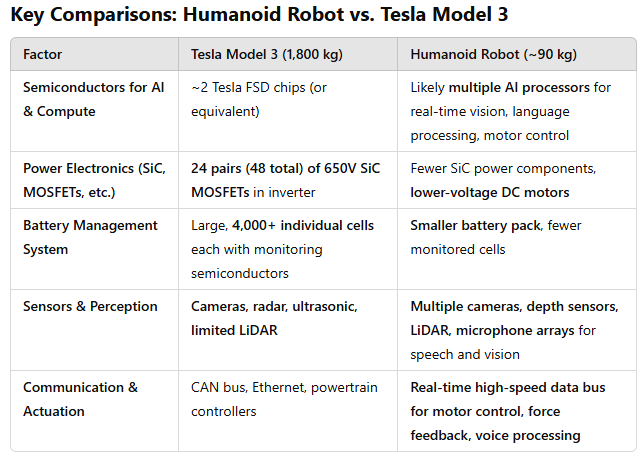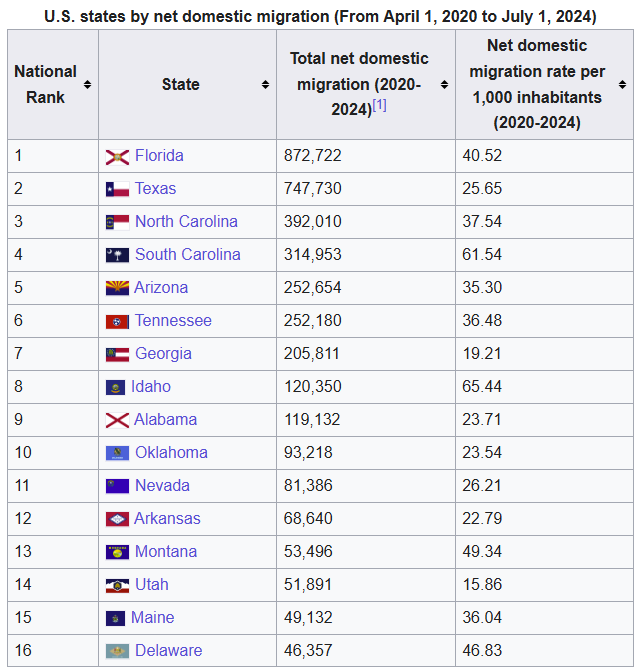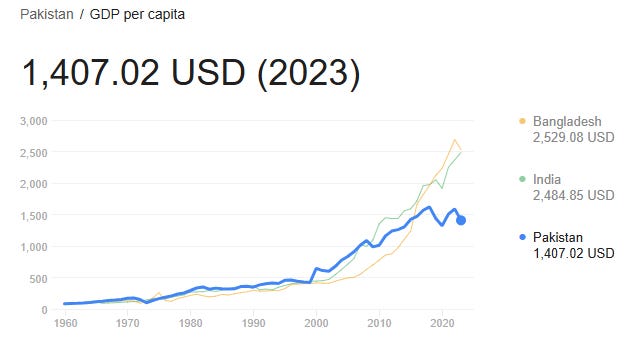Agentic robotics: historical funding and forecast; impact on war, labor force participation rate, & blue to red state migration.
I wrote a post making a variety of predictions for the humanoid robotics market back in April of 2024 (linked below). In this post I’ll walk through my updated thoughts and add some more topics of consideration given what I’ve observed over the past ten months (labor force participation, blue to red state migration, etc). Link to old post below.
My definition for Agentic Robotics is humanoids + any other form factor that might make more sense for a given use case - but which is intended to operate autonomously. For example - you’ve probably seen loads of videos of this dog on social media. If you haven’t they’re easy to find.
This dog can run over any terrain, climb steep hills, stairs, do flips, and more. You can attach additional cameras, sensors (to sniff out bombs, measure temperature, check for leaks, air pressure, the list goes on) and weapons to it. Multiple companies in the S&P 500 have these or similar walking around their warehouses doing quality control and identifying equipment that needs maintenance, security checks, etc. They can also collect soil samples, guard property, and accompany you on a hike - carrying extra supplies (though it wouldn’t be a very long hike given current battery limitations).
Robots can have near perfect aim, they can be “bullet resistant”, they don’t require health insurance, they work as long as they have a charge, and they only get better over time. The technology already exists today to create a literally unimaginable variety of use cases. Naturally - funding is exploding.
I grouped investment dollars into three categories:
Startups
Non-China Corporate
China (Corporate + Government)
Venture rounds are public, internal projects like Optimus are not, and data in China is harder to come by all around, but my brief research gave me the following ranges which feel like are in the right ballpark:
The 2024 number took a big jump thanks to Figure raising $675m from a variety of household names like Bezos, OpenAI, Intel, Ark, etc…
In just the past month we’ve seen a slew of new data:
Hiring announcements including from Tesla (~$500k per engineer?)
Production forecasts (implying we’ll start to see capex not just R&D)
Companies actually selling early versions (Unitree site here, they’ve already launched distributors)
Giant new funding rounds announced (Figure now trying for $1.5b @ $39.5b valuation up from the $675 which was at a $2.5b valuation if memory serves):
I think funding this year will land between $5-$8B.
Remember, until we had the intelligence piece solved there was no reason to make/invest in autonomous robots. It’s not useful to have one that can only operate on a controlled course that is pre-mapped in hard-code. Now we’ve essentially cracked having human level intelligence that can be ported into an autonomous robot.
Here’s a quick review on the unlocks that have occurred in the recent past:
High-torque actuators (2015)
Deep learning for vision, obstacle avoidance, and autonomous behavior (2018+)
Miniaturization & cost reduction in LiDAR/Depth cameras (2020+)
New chips (e.g. Nvidia Jetson, HBM) enabling “on-board” brains (2018+)
Advanced Reinforcement learning (as applied to improving agility, etc) (2021+)
Understanding natural language (2022+)
It takes a few years to commercialize a technology after it is invented. The pieces have to be combined, the manufacturing lines have to be developed. So here we are at the beginning of 2025 and only just now hitting the point where all the pieces required for autonomous intelligence are now widely available at costs made possible through at-scale production.
What’s more - consider how many new things we’ll need to invest in and create now that we have agentic robots - artificial skin for example. We’ll need skin that feels human, skin that is fire proof, skin that acts like an LED screen, and the list goes on. I think artificial skin will become a $10B+ market by the end of the decade. And what about batteries? Their cost has fallen 97% since 1991:
What you see in the chart above is an example of a Wright’s law cost curve (longer explanation linked here). In a nutshell, cost continues to drop at an approximately equal rate (percentage) in proportion to an approximately equal percentage increase in production capacity. An explosion of agentic robots combined with the proliferation of EVs will ensure that battery tech keeps falling rapidly straight through the singularity.
If you want to know what the future role of humans in the workforce will be, look no further than people employed doing things like Blacksmithing ancient weapons and monetizing through YouTube.
Humans will operate in extreme niches only, others that come to mind:
Hospitality where humans want to know it is another human serving them
Training machines to empathize with humans
Creating content (e.g. Chess has been won by computers but people still love to see other people play it)
Still, all mass jobs requiring physical labor will be replaced by humanoids or some other autonomous form factor (obviously the white collar work will disappear too, but that’s not the topic of this post). The market size (TAM) is therefore measured in the 10s of trillions.
I want to reiterate a point I made in a post on my other substack. Robots are about to change war forever (linked here). Below is an excerpt:
We’re very close to war changing forever
Everyone is talking about the use of drones in the Russia/Ukraine war. While the US has been using advanced multi-million dollar drones for reconnaissance and targeted assassinations for decades (see below), the drones being employed in the aforementioned conflict are cheap and can be assembled en-masse by amateurs in garages. Here’s a video of one such drone following a Russian soldier and then self-destructing - killing the soldier. This drone is being remotely controlled and must therefore be captained by a soldier hiding somewhere nearby. Similar drones have been used to destroy tanks.
This tinkerer built a drone for $500 using open source software that didn’t need a pilot and which could be trained to automatically home in on people (generally) or even a specific person. Simply enter coordinates (latitude, longitude) and the drone will fly to that area, then it will seek out the first human it identifies and fly straight toward it. For an extra $1000-$2000 you can get a larger model and some explosives capable of killing a person, and attach a fuse and some sensors that will automatically detonate on contact.
Price moves inversely to production capacity - more capacity = lower price. Were the components of an iPhone today purchased separately back in 1990 the cost would be in excess of $3 million (mostly due to the compute/memory). Today the cost is $1,000.
Imagine what the front lines of the Russia/Ukraine conflict would look like if each side could drop 10,000 drones at a time - all of which are working in concert with one another. The drones can navigate themselves, enter into small crevices, and are capable of distinguishing between civilians and combatants. The 10,000 drones reach a certain altitude and then immediately spread out - looking for the nearest combatant and heading straight for them. Once they’re close enough to ensure a kill they self-destruct.
New defense mechanisms will have to be created. New jamming technologies, new anti-drone batteries, and who knows what else. Will they work? I don’t know, but people are already figuring out ways around the future defenses. It’s extremely difficult to attack 10,000 things at once. Ironically - the best defense may end up being drones.
On timeline…
We’re < 2 years away from having figured out how to create agentic robots capable of zero latency communication, with human level intelligence, and which have dexterity on par with humans. Because the number of “obvious” use cases results in a market size measured in the trillions, an arms race is guaranteed.
Remember how after ChatGPT got released the entire world started building LLM models and applications on top? Nvidia became a household name and overtook Apple to become the world’s most valuable company - with - shockingly - the stock 10xing at the same time as it’s valuation stayed the same!
Nvidia will have more than 30Xed their revenue and profit from 2017 to 2027. This is unprecedented in corporate history - no company has ever done anything remotely comparable.
Just as we’ve seen a slew of companies get into the LLM game:
Google
Amazon
Microsoft
OpenAI
Anthropic
Amazon
Meta
Alibaba
DeepSeek
Tencent
And the list goes on…
We’ll see the same thing happen probably in 2026/2027 in agentic robotics. The most obvious leaders in the US will be Tesla and Amazon. Amazon employs 1.5 million people - so there is a similar situation as with AWS where they will be able to build something for themselves to replace their warehouse workers and then sell it as a service to everyone else. I’d put Google in third place b/c there is a ton of crossover tech between autonomous vehicles (Waymo) and agentic robots. Tesla may be the only one of these companies to build them internally - but Google and Amazon will undoubtedly start investing heavily on the intelligence infrastructure side (and may become customers of Tesla?)
Elon has suggested 5k humanoids will be produced by Tesla this year, 50k next year, and 500k in 2027. I previously forecasted 680,047 would be produced in 2029:
I think my forecast is probably more accurate than Elon’s. For one thing, until many thousands of these have been produced and used in the field - people won’t even know what updates need to be made to parts, materials, chips, sensors, etc. There’s just not enough available data to prepare for mass production yet, so while we may get 50k units next year - which would still mostly be used for training - we won’t get 500k the year after that.
What would make Elon right and me wrong is if the demand for training units was so high that it hit 500k itself. But we won’t have 500k being produced for field deployment in 2027.
On the bill of materials…
When thinking about the bill of materials for agentic humanoid robots you can probably use the following assumptions: 1/20th the raw material by weight used in a Tesla Model 3 (and a surprisingly similar mix of metals/plastics/rare/etc) but far higher density of advanced chips per kilogram. Note for example that Agentic Robots will need to have far more sensors b/c of taking input across the 5 senses, more sensitive sensors (e.g. to manage grip strength), more complex vision processing requirements for dexterity, etc.
On the labor force participation rate…
The labor force participation rate includes all adults either working or looking for a job. It has been declining steadily since 2,000 - and I think we’ll see the rate of decline accelerate starting sometime between 2027-2028.
Here are some of the catalysts I see emerging:
Equity returns will surprise to the upside enabling people to retire earlier. We’re at the beginning stages of an absolute collapse in the power balance between labor and capital (in favor of capital, obviously). The net result is that profit margins for the S&P 500 as a basket will increase steadily and beyond what is currently baked in. We very well might see a bear market between now and 2027/2028 - but the absolute return over the period will be more than people expect.
Deflation makes people spend less today because they expect things to be cheaper tomorrow. Effective by the end of this year we’ll begin to see the value of most humans (>50%) start deflating in the marketplace (at the same time - the value of other humans will increase more quickly than usual). Younger members of society who have unrealistic expectations about work will be the first victims. The net result of human deflation will be companies postponing hiring decisions to see if technology will be able to solve their problem “next year” instead. I think this impact really becomes visible in 3-4 years.
By 2028 companies will have a good enough idea about what capabilities agentic robots will have that they will have started baking that into their expansion / reorg plans.
Note that a drop in the participation rate from 62 to 60 implies a loss of about 5.2 million jobs assuming no population growth.
On the impact of power dynamics between red and blue states…
You’ve probably heard about people leaving blue states and heading to red states. It’s real. The top 15 states gaining population in the US all voted red in the last election. Delaware is the first democrat state to make the list.
The bottom ten (states seeing net out-migration) are obviously dominated by democrat states.
I know it would be tempting to blame the weather, but California is number 1 and it has great weather - and it is losing population at a far higher rate than anyone but New York. The statistics are in fact even more stark than they appear at first. Why? Moving is an act of agency. Let me explain.
The United States is the greatest country on Earth by far because it is comprised of immigrants - people who had the balls to uproot their life and move to a different place to pursue their dream. There is no greater act of human agency than uprooting and moving to a distant land.
This also explains why immigration in the US has a more positive impact than it does in Europe (where in an increasing number of cases its impact is actually negative). In Europe immigrants know that they will be given free room and board, free healthcare, a stipend for food, etc. Here’s what you get as a refugee or asylum seeker in Germany today:
Essentially, if you are coming from a third world country like Pakistan
- you can conservatively increase your income by 20-30X by getting into Germany - and that’s without working at all! According to the UK government, as of 2021 the percentage of employed Muslims was 51.4% vs. 70.9% with the overall population.
The rate has since fallen below half (as more immigrants have arrived and not started working). How is it possible to have such a gap? Because social welfare makes it easy to live without working. Denmark is another stark example, this chart comes from the Economist:
What the chart shows is that immigrants from the middle east, north Africa, Pakistan and Turkey (MENAPT countries) have a net negative contribution to public finances at all ages. This is crazy! The social contract that makes countries function is that people work and pay into the welfare system while they are able, and then when they’re old they receive welfare themselves. But in Denmark even at prime working age MENAPT immigrants are net takers rather than net contributors!
Why does this happen? Because the filtering mechanism is broken. Denmark doesn’t offer transformative benefits compared to the home countries of immigrants from other western countries (e.g. someone moving from France, the US, etc), but their social welfare programs are transformative when compared against the MENAPT countries.
The supply of people willing to move to a country to 20X their income and not have to work for a living is effectively unlimited.
It doesn’t require any agency at all to receive free stuff for no work. The net result of these extremely generous social welfare programs is that ALL people - not just the ones with extreme ambition and agency - want to move from wherever they are to Europe. This completely breaks the filtering mechanism that makes immigrants have a net-positive impact on the countries they move to.
My point re: red states vs. blue states is that the people moving are the ones in the states that have the most agency. They are already in the US - they already have the benefits conveyed by living in the US - so - the filtering mechanism applies. The people with the most agency are the ones that are moving. So not only are blue states losing population and thereby influence, they’re losing the most valuable parts of their populations. What does this have to do with humanoid robots? (You thought I forgot what the topic of the post was didn’t you?)
Well…
The natural response by democrat states to rapidly advancing technology will be to regulate. They already regulate far more than red states, they already build far less new housing than red states, they already have higher taxes and are more unfriendly to entrepreneurs and businesses than red states…
They will regulate companies’ ability to implement robots that replace humans, they will tack on extra fees for using robots instead of humans. They will increase labor protection laws generally, increase minimum wages, etc. Combine this with the fact that it is far more difficult to get building permits in blue states than red states and you have a perfect storm. The faster technology advances, the more incentive there will be for people with agency to pursue states where they can make the highest and best use of the new technology.
The only reason California is not fast becoming a third world country is that it has the infinite money glitch known as Silicon Valley. Peter Thiel compared California to Saudi Arabia (link here). Saudi Arabia has oil, California has Silicon Valley. Neither has effective governance, but it doesn’t matter because of their respective infinite money glitches.
But even this is beginning to crack. Here’s a list of just some of the companies that have recently left California:
Palantir
Pabst Brewing
CBRE
Hewlett Packard
Oracle
Charles Schwab
Snowflake
AECOM
First Foundation Bank
Tesla
Fico
Lucas Oil
McAfee
Neutrogena
SpaceX
Chevron
X (Twitter)
And the list will keep growing and keep growing at an accelerating pace.
Nothing will be as disruptive as agentic AI - both physical and digital. And disruption is extremely bullish for red states and bearish for blue states - both in terms of population growth and economic sway.















